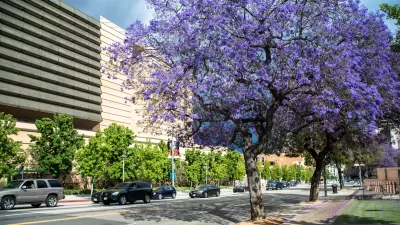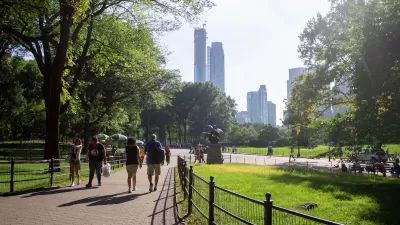How trauma-informed urbanism can make cities and their residents healthier and more resilient.

An opinion piece by Nicholas Lalla in Fast Company reveals the high social and economic costs of traumatic disasters, highlighting how cities can boost their resiliency and prepare for disaster recovery.
“A city that isn’t resilient enough to withstand the aftermath of a disaster, manmade or natural, isn’t one that can serve for long as a viable center of commerce, culture, and society,” Lalla writes. “Research published in The Journal of Clinical Psychiatry found that in 2018, post-traumatic stress disorder cost the U.S. economy over $230 billion, while research from the University of Pennsylvania found that childhood trauma alone cost society over $450 billion each year.”
In Lalla’s view, “Above and beyond strong infrastructure, such as levees that protect my hometown of New Orleans against hurricanes, cities need to better anticipate, mitigate, and heal from trauma itself.” Lalla describes an emergent field known as trauma-informed urban development, an approach that focuses on “resilience, community cohesion, and aid in recovery.” The approach includes strategies such as consulting with mental health professionals, connecting people with nature and green spaces that can help improve mental health and air quality, supporting vibrant, mixed-use developments, and providing economic opportunities to help residents recover after disasters.
Many of the goals of the trauma-informed urban development movement dovetail with the goals of other urbanists: walkability, better public transit, green spaces, and economic opportunity, all qualities that help cities “stand a good chance of being resilient to trauma.”
FULL STORY: How we build cities can help us overcome traumatic events

Maui's Vacation Rental Debate Turns Ugly
Verbal attacks, misinformation campaigns and fistfights plague a high-stakes debate to convert thousands of vacation rentals into long-term housing.

Planetizen Federal Action Tracker
A weekly monitor of how Trump’s orders and actions are impacting planners and planning in America.

In Urban Planning, AI Prompting Could be the New Design Thinking
Creativity has long been key to great urban design. What if we see AI as our new creative partner?

King County Supportive Housing Program Offers Hope for Unhoused Residents
The county is taking a ‘Housing First’ approach that prioritizes getting people into housing, then offering wraparound supportive services.

Researchers Use AI to Get Clearer Picture of US Housing
Analysts are using artificial intelligence to supercharge their research by allowing them to comb through data faster. Though these AI tools can be error prone, they save time and housing researchers are optimistic about the future.

Making Shared Micromobility More Inclusive
Cities and shared mobility system operators can do more to include people with disabilities in planning and operations, per a new report.
Urban Design for Planners 1: Software Tools
This six-course series explores essential urban design concepts using open source software and equips planners with the tools they need to participate fully in the urban design process.
Planning for Universal Design
Learn the tools for implementing Universal Design in planning regulations.
planning NEXT
Appalachian Highlands Housing Partners
Gallatin County Department of Planning & Community Development
Mpact (founded as Rail~Volution)
City of Camden Redevelopment Agency
City of Astoria
City of Portland
City of Laramie





























